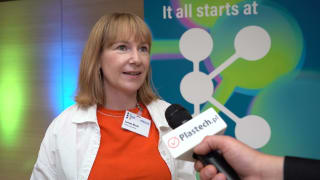 This year's EuroMold - World Fair for Moldmaking and Tooling, Design and Application Development - offers an exciting look at the field of 3D printing for everyone to its visitors. At the joint "DigiFabb" exhibition stand, exhibitors will present 3D printers, accessories and the related services. In the course of presentations, they will provide information about the current state of the art, developments and promising perspectives for the technology.
This year's EuroMold - World Fair for Moldmaking and Tooling, Design and Application Development - offers an exciting look at the field of 3D printing for everyone to its visitors. At the joint "DigiFabb" exhibition stand, exhibitors will present 3D printers, accessories and the related services. In the course of presentations, they will provide information about the current state of the art, developments and promising perspectives for the technology.The concept of printing numerous products for yourself at home has long since left the realm of science fiction. In the meantime, 3D printers are more rarely reserved exclusively for industry. Thanks to accumulated know-how and falling costs, this revolutionary form of production is now accessible to consumers as well. It is only a matter of time before individual 3D fabrication becomes part of our everyday lives. A public discussion about the economic and social consequences of this development began quite some time ago. That dramatic changes in the economic structure can be expected is undisputed. The foreseeable shift of production processes to the consumer as well as accelerated innovation processes are even being interpreted as the basis for a third industrial revolution.
Dr. Eng. Eberhard Döring, Trade Fair Manager for EuroMold: "The further development of 3D printing technology has the potential to shake the existing and previously solid definitions of the entire process chain - such as those of the consumer and the producer. For EuroMold as a trendsetting trade fair, it is therefore merely logical to provide a platform for the latest and most interesting technologies and to demonstrate to what extent they will fundamentally define
our daily lives in the very near future."
3D printers for home use are available from just EUR 300 in the meantime. Anyone can therefore produce objects such as small toys, jewellery or similar items. Typical materials include plastics, synthetic resins, ceramics and metals. Less material is wasted compared to traditional production methods and the process also consumes less energy in most cases. 3D printing technology is already being used for prototype development in the fields of design, architecture, mechanical engineering and mass production in medicine and dental technology or the packaging industry.
In keeping with this topic, the purmundus challenge 2013 is taking place during EuroMold. The international design contest in the field of 3D printing recognises the work of designers, engineers and programmers in the categories of best innovative concept, best market-ready product and best user-friendly interface.


